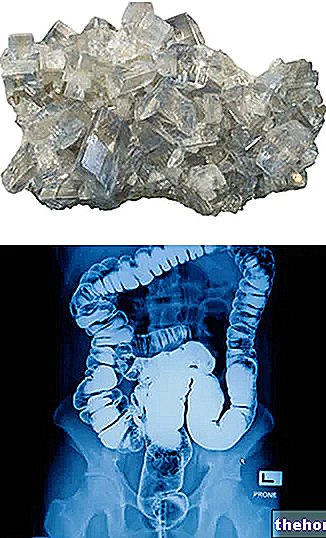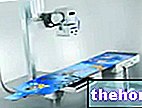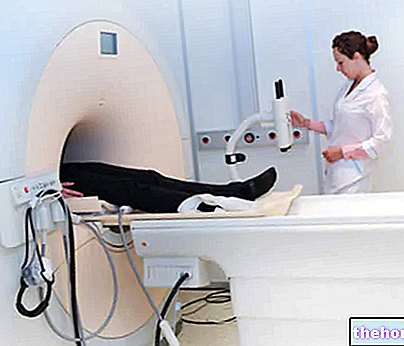Generality
Abdominal ultrasound is a diagnostic imaging technique that investigates the morphology and health of the abdominal organs through the use of ultrasound.
- In particular, ultrasound of the upper abdomen examines the liver, gallbladder and biliary tract, pancreas, spleen, kidney and adrenal gland, as well as the major vascular structures and lymph nodes in the region.
- With the lower abdominal ultrasound it is possible to evaluate the anatomy and vascular function of the bladder, prostate, uterus and appendages.
Abdominal ultrasound is a non-invasive and well tolerated examination, of high diagnostic accuracy and low cost. For these reasons it represents the first screening modality for the study of the abdomen.

Main indications for abdominal ultrasound
The health conditions that lead a doctor to prescribe an abdominal ultrasound scan are varied and numerous. For example, the most common operational indications are related to the detection of suspicious symptoms or alterations in the blood chemistry indices attributable to the functionality and health of the organs that can be investigated by abdominal ultrasound.
Indications with Urgency Character
- Presence of abdominal or back pain, a pulsating abdominal mass and hypotension: characteristic symptom picture of the abdominal aortic aneurysm, a pathological dilatation - of this large vessel that carries oxygen-rich blood to the abdominal and pelvic organs, as well as in the lower limbs. The main causes of this disease, very dangerous but often asymptomatic, are represented by smoking habit, male sex, age over 60, familiarity with this pathology and the presence of other arterial diseases (angina, arteriosclerosis, arterial hypertension, etc.).
Abdominal ultrasound for aortic aneurysm screening (in this case without the urgency character) is recommended for all men aged between 65 and 75, provided they are smokers or former smokers. male subjects over the age of 60 who are siblings or children of patients with aneurysms. - Significant weight loss accompanied by abdominal pain: this may indicate a serious organ malfunction (usually liver) or a malignant mass.
- Abdominal trauma following accidents.
- Recent onset cholestasis: hepatic or extrahepatic obstruction of biliary flow; it manifests itself with abdominal pain sometimes with sudden and violent onset (abdominal colic), digestive difficulties, poor appetite, jaundice, light stools and dark urine.
- Swelling / mass of recent onset (excluding soft parts): possible indication of malignant or benign tumors, cysts or abscesses, which can be distinguished from each other by abdominal ultrasound.
- Non-inflammatory macrohematuria: significant presence of blood in the urine, such as to give it a frankly red or brown appearance. The pathologies that are most frequently associated with the finding of blood in the urine are the presence of stones, neoplasms or inflammation in the kidney, bladder or urinary tract. Hematuria can also be linked to tuberculosis, cystitis, use of anticoagulant drugs, polycystic kidney, prostatitis, prostate adenomas or trauma involving the kidney and / or excretory tracts.
- Uroseptic fever: fever linked to the presence of urinary tract infections, with transient entry into the bloodstream of pathogens. It manifests itself with irregularly intermittent fever with high fever peaks (39-40 ° C), to which the symptoms of urinary infection are added.
Other possible indications
Indicative laboratory parameters for abdominal pathology (amylase, lipase, trypsin, direct and indirect bilirubin, transaminase, creatinine, tumor markers ...), biliary / renal colic, recent and relapsing lumbar pain with microhematuria, hepatomegaly, hepatic steatosis, ascites, cirrhosis, hepatitis, fever of unknown origin, jaundice, kidney or gallbladder stones, pancreatitis, suspicion of various types of tumors, monitoring of the therapeutic efficacy or health of an organ after transplantation.
The so-called operative abdominal ultrasound can be performed for diagnostic or therapeutic purposes, for example to guide the path of the needle during a biopsy, a hepatic or biliary drainage, a paracentesis or the treatment of tumors by radiofrequency or laser hyperthermia.
How does it work
Ultrasound is a non-invasive diagnostic imaging technique, based on ultrasound exposure of the body area to be examined. This region is bombarded with high-frequency sound waves, imperceptible to the human ear, absolutely harmless and which have nothing to what to do with the dangerous radiation used in the course of x-rays.
Through this technique, a beam of ultrasounds (so called because they are not audible to the "human ear) is projected onto the" body area to be examined, thanks to a "special probe. At this point the tissues affected by the sound waves reflect them in varying degrees to according to their consistency; therefore, by capturing the reflected ultrasounds by the same probe that generated them, and converting them into electrical signals, it is possible to process them electronically to reconstruct the morphology of the tissues and organs studied.

How to do it
During an abdominal ultrasound, the patient is typically in a supine position, lying on his stomach on the outpatient bed. The procedure, not painful, foresees the sliding of the ultrasound probe on the abdomen previously sprinkled with a transparent gel, which has the purpose of improving the contact between the transducer and the skin, eliminating the air pockets. The probe, manually operated by the operator, is then pressed against the skin of the abdomen from various angles, focusing on those of greatest diagnostic interest.
The ultrasound exam is usually completed in 30 minutes.
Preparation
Since the excessive presence of intestinal gas can limit the accuracy of the diagnostic examination, in the two / three days preceding the abdominal ultrasound the patient must limit the consumption of all those foods that can cause problems with meteorism and flatulence (such as those rich in fiber and slag). He must therefore refrain from the consumption of legumes (lentils, beans, broad beans, chickpeas, peas), milk and dairy products, vegetables, tubers, grapes, various cheeses, bread and pasta (both allowed with extreme parsimony), wholemeal products and fermented foods. In these days, carbonated drinks will also be avoided, limited nerves (tea, coffee, hot chocolate) and of course abolished the consumption of alcohol. In the "approach to abdominal ultrasound", on the other hand, the consumption of meat, fish, eggs, fruit without peel (with the exception of grapes), aged cheeses in moderation, and still mineral water is allowed. In some cases (transrectal ultrasound), it is recommended to take a laxative the evening before the examination or to undergo a cleansing enema, while in the previous two days the presence of gas in the intestinal tract can be reduced by taking simethicone (eg Mylcon ®) or vegetable charcoal. In the event that the patient has to undergo a complete abdominal ultrasound or of the lower abdomen only, it may also be required to drink a liter of non-carbonated water in the hour preceding the examination, and to retain the urine until the end of the examination. same.
On the day of the examination, the patient must have been in the clinic on an empty stomach for at least eight hours, during which he can only drink still water. "abdominal ultrasound.




























